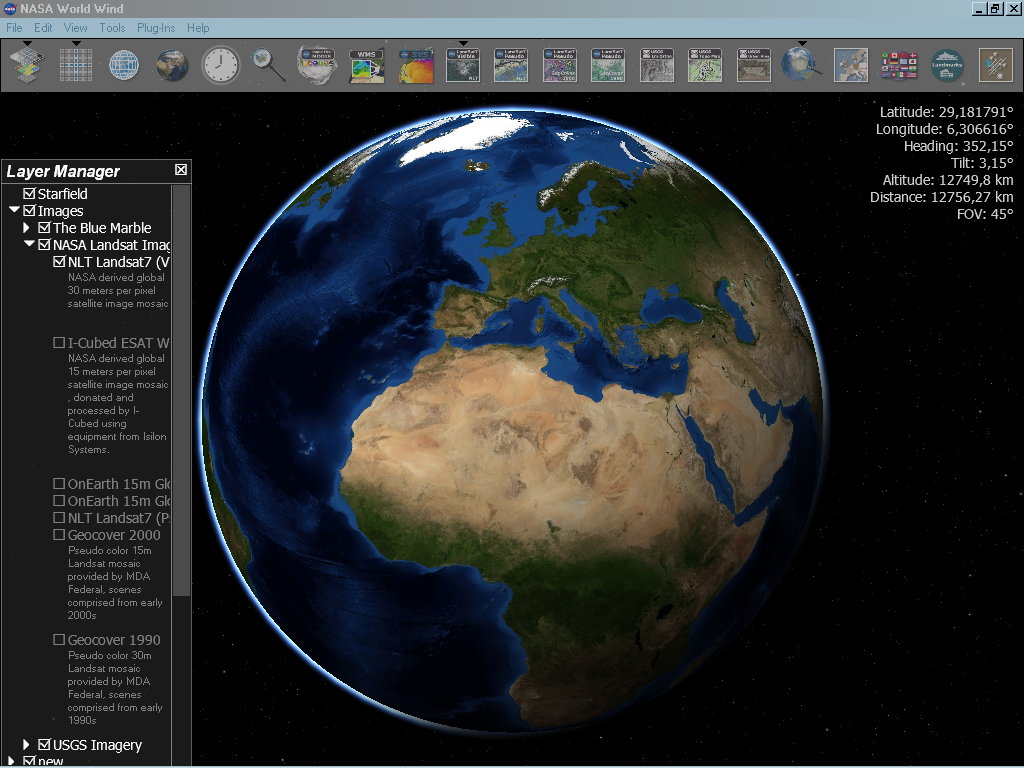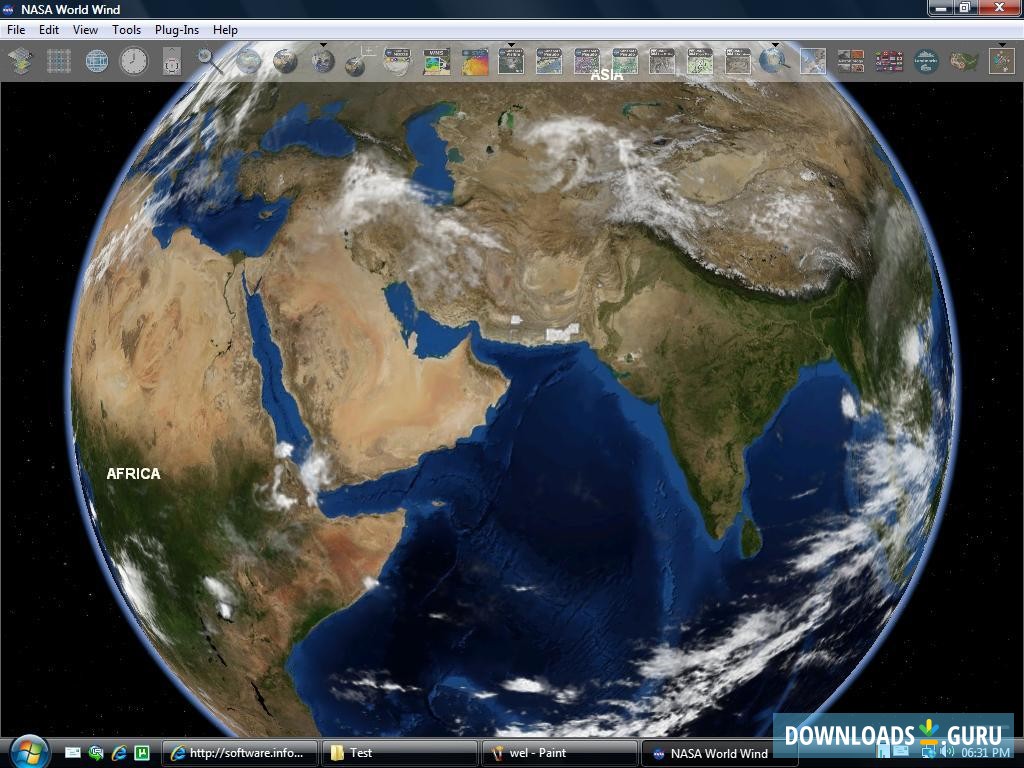
USGS (United States Geographical Survey) high-resolution imagery of the U.S.MODIS (Moderate Resolution Imaging Spectroradiometer) feeds of time-relevant events like wildfires, storms, and volcanos.NASA SVS (Scientific Visualization Studio) animations of earth science phenomena.STRM (Shuttle Radar Topography Mission) topological maps showing elevation data.Landsat 7, the primary satellite image mosaic, including data outside the visible light spectrum.Blue Marble, the high-resolution composite photograph of the entire globe.

On the other hand, the project’s background in scientific visualization means it can handle more complicated tasks, and there are far more data sources built in. By some accounts it is less polished than Google Earth - the primary image data comes from Landsat 7, which has less resolution than the Keyhole commercial imagery. World Wind, by contrast, is open source and available now.
#NASA World Wind code#
Similarly, even though Google has published the specification for KML (Keyhole Markup Language), programmers have no access to the client or server source code to add additional functionality. A Linux/NetBSD/Plan9 port might be technically possible, but nothing can be done about it. The combination of these facts lead some to speculate that a Linux port is not only technically viable but perhaps underway in some secret back room at the Googleplex. Furthermore, the Google Earth Fusion component of the enterprise corporate package already runs on Linux.
#NASA World Wind mac os#
Google Earth can use either OpenGL or DirectX as its 3D toolkit, and the System Requirements page has long touted the claim that a Mac OS X-native version of the application is being worked on. The Earthviewer 3D was redubbed Google Earth in May and released at three price points: free (basic), $20 per year (“Plus”) and $400 per year (“Pro”). Keyhole was founded in 2001, released its first product in 2003, and was purchased by Google in October 2004.

It relies primarily on commercial satellite images from one to two years ago. Google Earth, you may recall, is a re-branding of Keyhole, Inc.’s Earthviewer product. The only difference is that World Wind is open source. Zoom in and look for your childhood home, fly past your favorite landmarks, study the coastlines for continental drift - you have all of the same options. NASA’s World Wind project - like Google Earth - is a 3D planetary visualization system that overlays satellite imagery, weather, political, and topological map data. In some respects the search engine behemoth is quite OS-agnostic, but the 3D virtual globe remains limited to Windows desktops only. Few of Google’s projects, rumors of projects, and acquisitions have generated as much envy among Linux users as Google Earth.


 0 kommentar(er)
0 kommentar(er)
